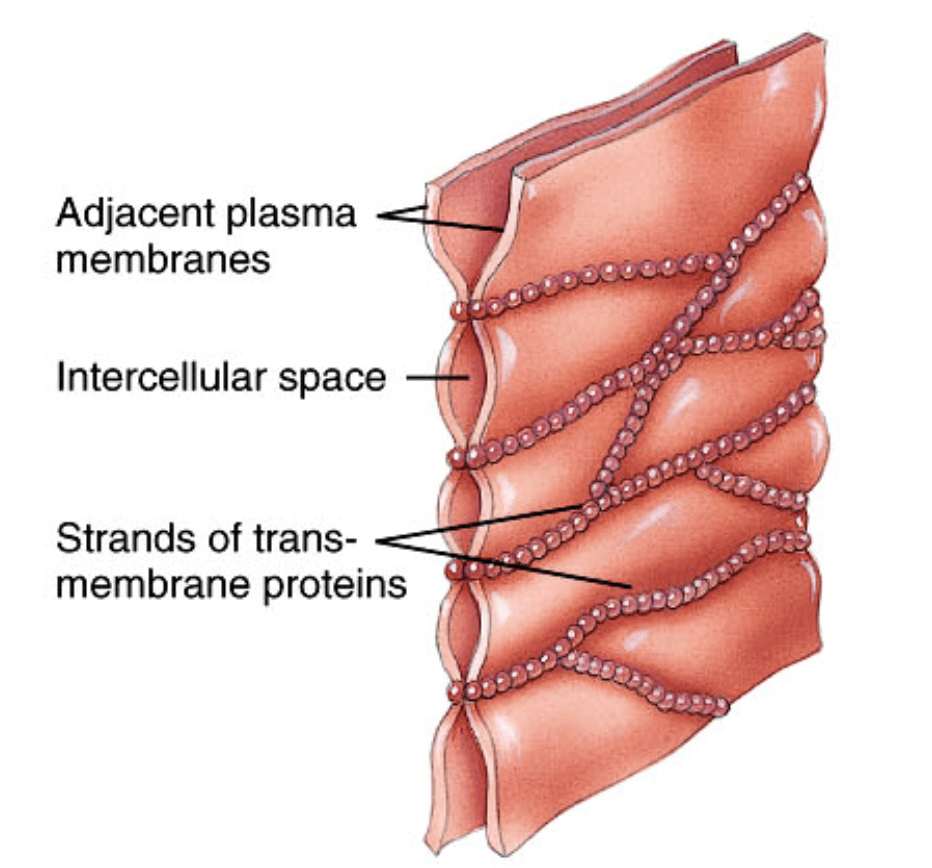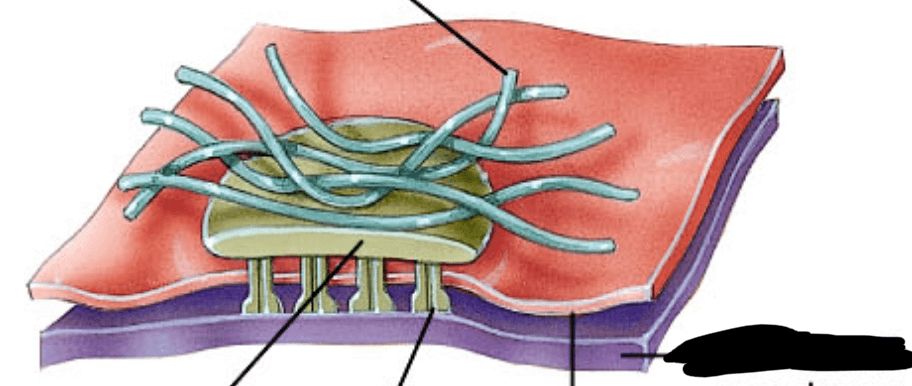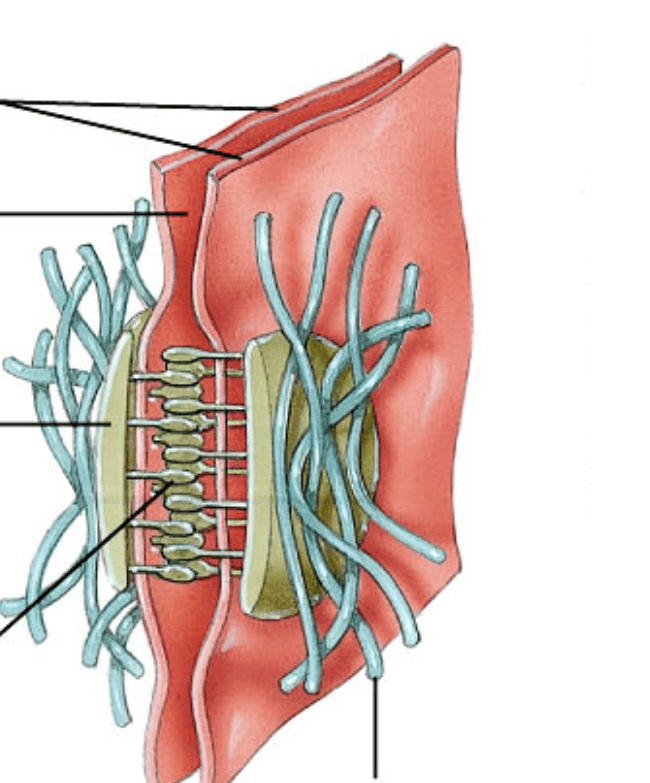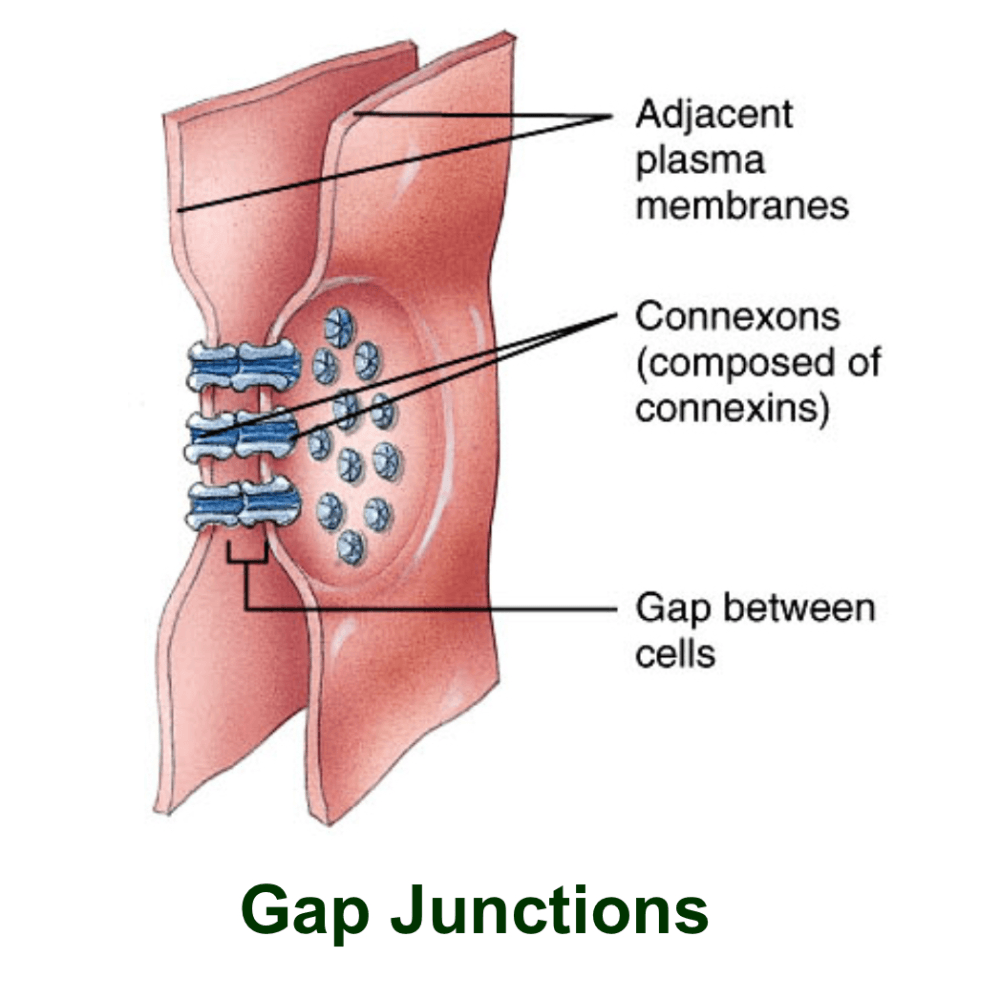This mechanism of transport accounts for movement of respiratory gases, alcohols, lipds, steroids and lipid soluble drugs into cells
Simple diffusion
Difference between active and passive transport
passive-down the concentration gradient
active-against the concentration gradient, uses ATP
Name the factors that impact rate of diffusion
Distance: shorter distance=faster diffusion
temp: higher temp=faster diffusion
molecule size: smaller molecules diffuse faster
electrical gradient: opposite charges attract each other compared to like charges
gradient size: larger the concentration gradient=faster diffusion
cell junctions
This type of protein catalyzes metabolic reactions near the cell surface
enzymatic proteins
The pressure caused by waters attraction toward the solute
vs.
The pressure caused by water in the inside of the membrane or vessel
Explain the fluid mosaic model
all cell membranes consist of a "fluid" phospholipid bilayer with an embedded "mosaic" of membrane proteins and associated carbs/cholesterol
fluid=phospholipid bilayer
mosaic=associated proteins, carbs and cholesterol
This type of protein anchors or attaches the membrane to the extracellular matrix of other cells
Attachment or anchoring proteins
Endocytosis, pinocytosis, exocytosis, phagocytosis, transcytosis and receptor mediated endocytosis are all types of what transport mechanism? Explain each of them
All a type of vesicular active transport
endocytosis-cells engulf substances
pinocytosis-extracellular fluid is pinched into small vesicles aka cell drinking
exocytosis-secrete contents from the cell(ex. hormones, enzymes or wastes being secreted from the cell)
phagocytosis-large, solid material gets engulfed(ex. macrophages)
receptor mediated endocytosis-substances bind to receptors and once completed, the receptor and the substance are pulled in together forming a vesicle(ex. cholesterol bound to lipoproteins)
transcytosis-movement of substances in, across and then out of the cell
This type of cell junction uses fusion of attachment proteins between cell membranes that act as an impermeable barrier between cells. An example would be in the intestines or bladder
Tight junction

This cell junction attaches cells to basement membrane and extracellular matrix of underlying connective tissue

Hemidesmosome
The net movement of solutes(ions or molecules) from areas of higher concentration to lower concentration
Diffusion
What is secondary transport and give an example
the usage of ATP to move molecules across a membrane
ex. this is how glucose and amino acids are transported across the membrane and into cells
List the examples of active transport
Sodium/Potassium pump
vesicular transport
primary active/secondary active
Explain the sodium/potassium pump. Is it active or passive transport
Active transport
Antiport pump that moves 2 potassium inside the cell while 3 sodium leaves the cell (think "K i'm in vs. Na I'm out)
Name the functions of the plasma membrane
separates internal cytoplasm from extracellular fluid
regulates exchange of nutrients and ions, elimination of wastes and release of secretions
provides sensitivity to environment and allows for communication with other cells
provides structural support-forms connections with extracellular materials or other cells to form tissues
Name the two membrane proteins and their location
Integral(transmembrane proteins)-found on the membrane
Peripheral proteins-found on the membrane surface
What is primary active transport and give an example
Explain hypertonic vs isotonic vs hypotonic solutions and its relationship with water
hypertonic-higher concentration of solutes outside the cell than inside the cell. remember that water moves to higher solute concentrations so in hypertonic solutions, water will move outside the cell causing the cell to shrink(crenation)
hypotonic solutions-less solute concentration outside the cell than inside. since water follows high solute concentrations, it will move inside the cell causing it to burst(lysis or hemolysis)
Explain osmosis and its relation with solute concentration
the movement of water across the membrane
water moves where there is a higher solute concentration
This type of diffusion allows for the passive transport of small molecules or ions that cannot pass through the phospholipid bilayer. It requires a carrier or channel protein but not ATP.
Facilitated diffusion
passive transport of ions and water(channel proteins)
passive transport of glucose and amino acids(carrier proteins)
*when thinking of channel proteins think of the Na/K pump(even though that's active) because it acts as a channel for smaller ions. Glucose and AA however are larger and need to be physically carried across the membrane*
What type of cell junctions is this, what is its function and where is it found?

Desmosomes
Found in the epidermis or some cardiac muscle
Keratin(intermediate filaments) help to reinforce the cell membranes and anchoring proteins link cells together
Forms a strong, velcro like connection between cells
provide strength and flexibility to tissues
This type of cell junction uses membrane proteins called connexons that are joined between cell membranes and form a channel from cell to cell. This allows for communication between cells.
Where is this cell junction located?
Gap junctions
Think they're closing the gap between cells which allows them to communicate.
Found in cardiac muscle tissue

Name the types of passive diffusion
simple, osmosis, facilitated diffusion
Glycoproteins that help the body to distinguish its own cells from foreign cells and provide the cell with a unique chemical ID are called what?
Cell recognition proteins
This active transport mechanism helps to establish an electrochemical gradient across cell membranes called the transmembrane potential
the sodium/potassium pump
electrical gradient due more positive ions outside the cell
chemical gradient is due to the actual movement of the chemicals, the goal is to have more sodium outside the cell and more potassium inside the cell
This protein allows the passage of specific ions(or water) through membrane
channel proteins
This type of active transport moves substance in the same direction vs. another type of active transport moves substances in opposite directions
symport vs. antiport
What are receptor proteins
they are proteins that bind to a messenger molecule aka a ligand
they function to relay signals and triggers a cell response (cell transduction)
ex. G protein couples hormone receptor and cyclic AMP
These types of proteins bind with substances(sugars, amino acids) that are then transported across the membrane
carrier proteins(transporters)
Movement of respiratory gases, alcohol, fatty acids, steroids, and lipid-soluble drugs into cells
Simple diffusion
How does water move as it relates to solute concentration
Water moves towards higher solute concentration